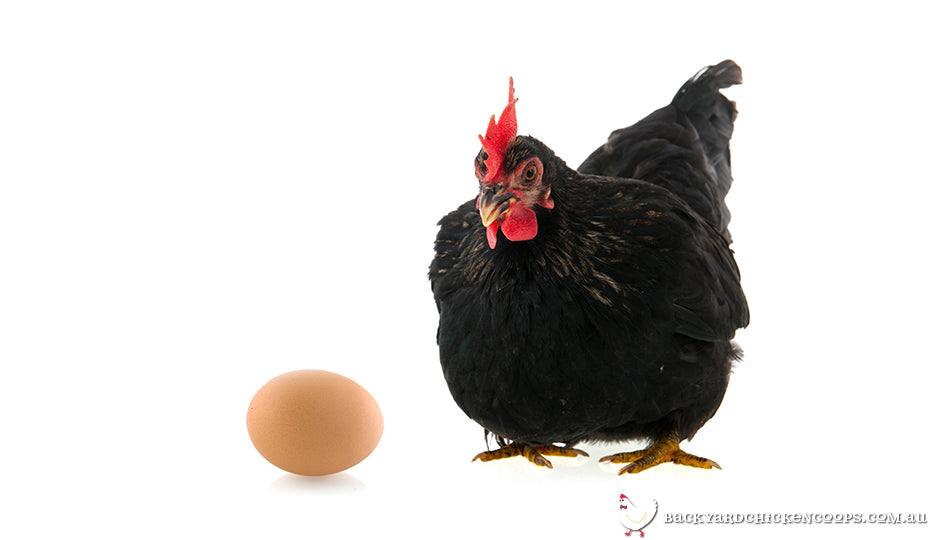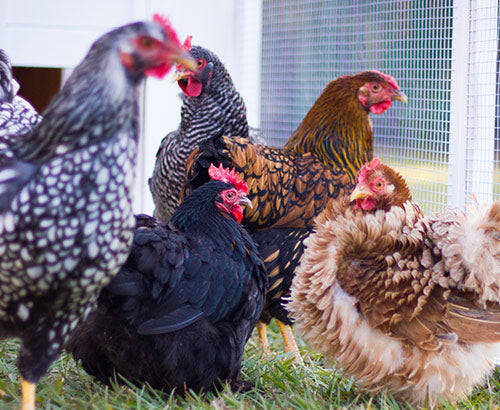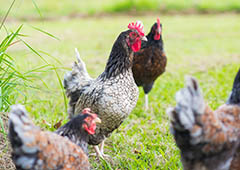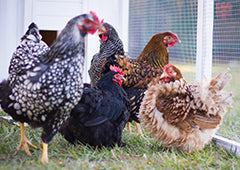Although we keep chickens for a number of different reasons, one of the main incentives for having backyard chickens is the delicious fresh eggs they produce for us-who doesn’t love eggs for breakfast!
While we can buy breeds based around their egg producing capabilities, how can we tell who in our flock is a laying queen, and who is freeloading? (Check out all the breed profiles on our learning centre to see which chickens are bred for egg production.
First things first, let’s take a look at what eggs-actly our girls need, to be given the best chance of producing delicious and nutritious eggs!
For your girls to consistently lay eggs they need around 14-16 hours of sunlight a day. Your girls eggs are a result of a surge in hormonal activity that occurs due to sunlight (hence why you will find your flock will produce eggs more consistently throughout spring and summer). So the more natural sunlight your chickens are exposed to, the more hormones that are produced and that means more eggs for everybody!
Coupled with a balanced and nutritious diet that contains adequate levels of protein, carbohydrates, fat, vitamins, minerals and fresh water, your girls have the best foundations for successful laying.
The hormonal activity that your chickens body goes through to lay an egg will cause visible changes in her body, so there are a number of visual characteristics that will determine whether your chick is a good layer or not.
-
Vent: it may not be the most pleasant of tasks, but examining your chickens vent is the first place to check if you want to know if they are producing the goods. An egg-cellent layer should have a wide, moist and bleached vent. This will allow for eggs to pass more easily, compared to a poor layer who will have a small, dry vent.
-
Combs and Wattles: combs, wattles and earlobes that are rich and glossy in colour, and have increased in size, indicates a healthy, laying hen. On the other hand, a hen displaying short, pale and hard combs and wattles signifies they are not in lay.
-
Plumage: if your hen is looking extra smart and well-groomed with extra soft feathers, this is probably a good indication that they are not a good layer-if your girl isn’t using the protein in her feed for egg producing, it will go straight to producing a beautiful shiny coat! So those that tend to be better layers have more worn and tatty feathers-sacrificing their appearance for your brunch, tough gig!
-
Moulting: when and how your chicken molts can also help you determine how good of a layer your girl is. You will find your best layers will moult later in the colder seasons, shedding and re-growing their feathers all in one go. This generally takes them all of a few months, then they return to their normal laying habits. Poor layers however, molt early and slowly, which can take up to several months to complete.
-
Body Shape: a nice broad body that is deeper towards the rear, with legs set back and wide apart is a good indication that your girl is a good layer. Their body is set like this to accommodate all their egg organs. A productive layer also should not be too thin, nor too fat. However a small amount of fat does indicate that your hen is storing all the necessary nutrients for conducive egg laying.
So if fresh eggs in the morning is becoming a rarity, a quick inspection of your flock, focusing on the features listed above should give you the best indication of who is more lazy than layer.
With so breeds to choose from, it can be eggtremely confusing and difficult to find the best layers for you and your family. From looks, to personality, to egg-laying talents - where should you begin?
Cluckily, our friends over at Chickenpedia have created an amazing Chicken Breeds Course. This extensive online course shares useful advice on choosing the right chickens for you as well as size & frequency of eggs laid. You’ll even learn about their individual personalities, and be able to use their family-friendly compatibility scale through this well-structured program. It really is a great way to find your perfect backyard buddies which is why I highly recommend them to all of my readers! The courses are beginner-friendly and filled with vital information to help you raise a happy, healthy flock.
As chicken keepers, we want to do an eggcellent job when caring for our feathered friends, but many of us struggle to handle chicken health or behavior issues, especially in the first few years of having a flock. Chickenpedia have a full range of comprehensive online courses that cover everything you didn’t know you need to know and then some more! From healthcare to raising baby chicks to feeding and behavior, that’ll give you the knowledge and confidence to successfully look after your chickens.
As a member, you will get access to ALL their fantastic courses. So, no need to wing it, become a confident chicken keeper. Click here to check out Chickenpedia today!


















